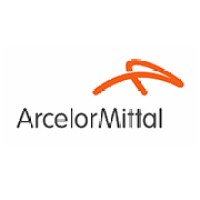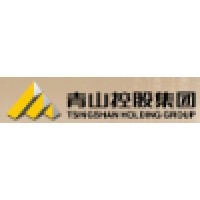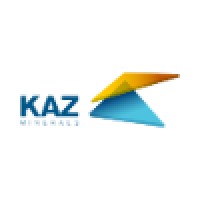Company Cyber Security Posture
NANA
NA Company Details
NA
NA
NA
NA
NA
NA
Scan still pending
NA
NA
Between 200 and 800
This score is AI-generated and less favored by cyber insurers, who prefer the TPRM score.
 NA Global Score
NA Global Score.png)

Company Scoring based on AI Models
| Model Name | Date | Description | Current Score Difference | Score |
|---|---|---|---|---|
| AVERAGE-Industry | 03-12-2025 | This score represents the average cybersecurity rating of companies already scanned within the same industry. It provides a benchmark to compare an individual company's security posture against its industry peers. | N/A | Between 200 and 800 |
Company Cyber Security News & History
| Entity | Type | Severity | Impact | Seen | Url ID | Details | View |
|---|
Company Subsidiaries

NA
Access Data Using Our API

Get company history
.png)
NA Cyber Security News
The books shaping today’s cybersecurity leaders
From strategy and psychology to history and decision-making, these are the books CISOs recommend to sharpen your thinking, influence your ...
The role of the cybersecurity PM in incident-driven development
From PowerShell abuse to USB data theft, modern threats hit fast—and hard.vSee how security-minded PMs are responding with real-time ...
Introducing the smarter, more sophisticated Malwarebytes Trusted Advisor, your cybersecurity personal assistant
Malwarebytes Trusted Advisor has had an update, and it's now sharper, smarter, and more helpful than ever.
3 Top Cybersecurity Stocks to Buy Now
These cybersecurity stocks can benefit significantly from the increase in threats.
Trump AI plan calls for cybersecurity assessments, threat info-sharing
The U.S. government will expand information sharing, cyber risk evaluations and guidance to the private sector to address the cybersecurity ...
USF Bellini College of Artificial Intelligence, Cybersecurity and Computing hosts inaugural summer research program ahead of fall launch
From training robots to integrating artificial intelligence into hardware systems, the USF Bellini College of Artificial Intelligence, ...
Bad Break In CIBR Led To Our Exit And The Skip Of A New Entry
A bad break in cybersecurity stocks led to our exit, even before knowing the reason for it. It also led to us skipping the next setup.
Cyber Career Opps: Weighing Certifications vs. Degrees
Longtime CISO Melina Scotto joins Dark Reading to discuss career advice gleaned from her 30 years in the cyber industry.
Google, Palo Alto, and the Billion-Dollar Cybersecurity Wars
Palo Alto Networks is reportedly in talks to acquire SentinelOne in a deal worth up to ₹83400 crore, reshaping the AI cybersecurity ...

NA Similar Companies

Orica
Our story began in 1874, when we first supplied explosives to the Victorian goldfields in Australia. Since then, we have grown to become one of the world’s leading mining and infrastructure solutions providers. From the production and supply of explosives, blasting systems, mining chemicals and g

Votorantim Siderurgia
Criada em 2008, a Votorantim Siderurgia (VS) representa o segmento de aços longos dentro do portfólio da Votorantim S.A. A VS é uma organização de capital fechado, 100% nacional e a terceira maior produtora de aços longos no Brasil. Temos ainda o controle acionário da PazdelRío, única siderúrgica in

tsingshan holding group
tshint is one of the biggest nickel alloy and stainless steel manufactory in china. our stianless steel cooperation partner: baosteel, lisco, acerinox, posco. our web site: www.tssgroup.com.cn video: v.youku.com/v_show/id_XNDQzMDc0Mjg4.html our advantage: 1) tsingshan holding group now is

Sinosteel Corporation Limited
Sinosteel Corporation abbreviated as Sinosteel is a central enterprise under the administration of the State-Owned Assets Supervision and Administration Commission. There are 86 subsidiaries under the administration of Sinosteel, among which 63 are in China and 23 abroad. In 2009, the core businesse

KAZ Minerals
KAZ Minerals is a high growth copper company focused on large scale, low cost, open pit mining in Kazakhstan and the CIS region. It operates the Aktogay and Bozshakol open pit copper mines in the Abay and Pavlodar regions of Kazakhstan, three underground mines and associated concentrators in the Eas

Harmony Gold Mining Company Limited
Harmony Gold Mining Company Limited (Harmony), a world-class gold mining and exploration company, has operations and assets in South Africa and Papua New Guinea (PNG). Harmony has more than 70 years’ experience in the industry. Company assets include one open pit mine and several exploration tenemen

Frequently Asked Questions
Explore insights on cybersecurity incidents, risk posture, and Rankiteo's assessments.
NA CyberSecurity History Information
How many cyber incidents has NA faced?
Total Incidents: According to Rankiteo, NA has faced 0 incidents in the past.
What types of cybersecurity incidents have occurred at NA?
Incident Types: The types of cybersecurity incidents that have occurred include .
Additional Questions
What Do We Measure?
















Every week, Rankiteo analyzes billions of signals to give organizations a sharper, faster view of emerging risks. With deeper, more actionable intelligence at their fingertips, security teams can outpace threat actors, respond instantly to Zero-Day attacks, and dramatically shrink their risk exposure window.
These are some of the factors we use to calculate the overall score:
Identify exposed access points, detect misconfigured SSL certificates, and uncover vulnerabilities across the network infrastructure.
Gain visibility into the software components used within an organization to detect vulnerabilities, manage risk, and ensure supply chain security.
Monitor and manage all IT assets and their configurations to ensure accurate, real-time visibility across the company's technology environment.
Leverage real-time insights on active threats, malware campaigns, and emerging vulnerabilities to proactively defend against evolving cyberattacks.




